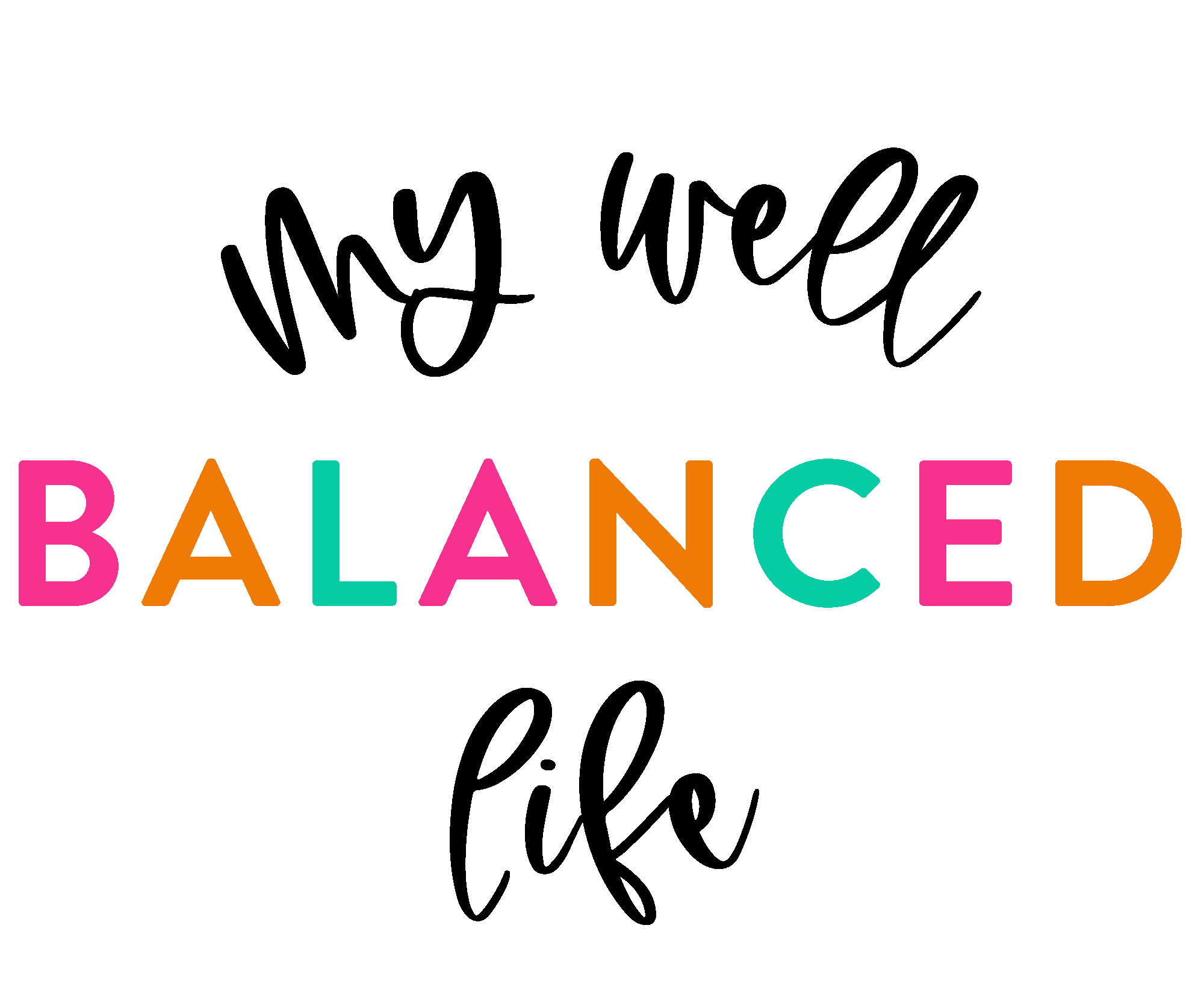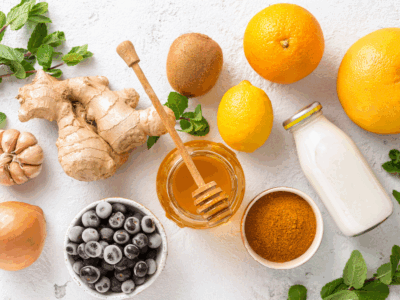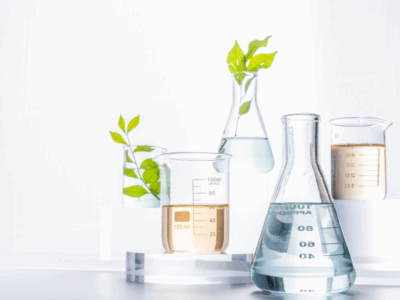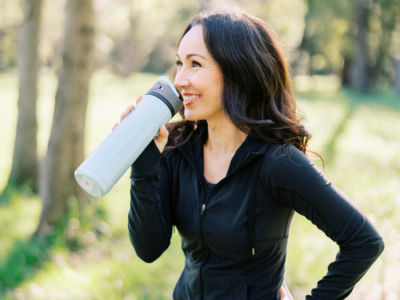It’s National Infertility Week and with most topics dear to my heart, I have a few things I think you should know. I think by now we’ve all heard the statistic that 1 in 8 couples are affected by infertility.
Table of Contents[Hide][Show]
But did you also know…
- Roughly 40% of infertility is attributed to the man…
- 25% of cases are related to irregular ovulation…
- Roughly 12% of infertility cases are due to women weighing too much or too little (which can be for various reasons, some even beyond control without medical assistance)…
- 1 in 4 women have suffered a miscarriage…
- There is such a thing as secondary infertility for women who had an “easy time” conceiving the first time but not the subsequent pregnancies…
- Roughly 30% of couples around the world will be diagnosed with “unexplained infertility” after finding no medical reason why they are not conceiving…
- And infertility also includes women who CAN get pregnant but CANNOT sustain pregnancies. It’s not just about getting pregnant but staying pregnant.

Those are tough facts to swallow—especially if you’re a woman 35+ who is now considered “geriatric” in the world of fertility Geriatric? Seriously, do you need to stamp that on my folder?? Even “advanced maternal age” sounds better than that. Anyway …
As most of you know, I am all too aware of this exhausting, defeating, rollercoaster ride that is infertility.
But what’s interesting is even though I speak of it so openly now, I hid this part of my life for a long time. Only a handful of people knew what I was going through during those years … not even my parents knew the extent of it. It wasn’t until my rainbow baby’s 1st birthday that I decided to speak up and tell my story. You can read that first blogpost here.
But in some weird ways I wouldn’t change any of it for the world. Not only did it bring us our perfect son at the exact moment he was meant to be in this world… but it also changed my life forever.
As a mom and wife that doesn’t want to expose my family or myself to toxins… and as a human being who wants to help educate and protect others as well.
My life motto is simple: Real Food. Healthy Movement. Safer Products.
And yep, these are 3 things—nutrition, exercise, and toxin exposure—that have a BIG impact on fertility. Let’s talk about it…
How Diet Affects Fertility
It’s less about the foods themselves and more about what the foods offer that is the focus here. For women looking to conceive… and maintain a healthy pregnancy… certain nutrients are essential such as folate (folate is what folic acid converts to in your body), Vitamin B12, zinc, calcium, and Omega3 Fatty acids.
The reason REAL FOODS are so important is because processed foods do not contain adequate levels of these essential nutrients.
According to a Harvard review of past studies, “Trans fat and “unhealthy diets” (those “rich in red and processed meats, potatoes, sweets, and sweetened beverages”) were found to have negative effects (in women). Studies of men have found that semen quality improves with healthy diets (as described above), while the opposite has been linked with diets high in saturated or trans fat.”
A healthy “diet” also lowers the risk of diabetes, high cholesterol, and unhealthy weight gain that is often contributed to infertility.
The diet most often recommended is the Mediterranean Diet, rich in vegetables, fruits, nuts, seeds, legumes, potatoes, whole grains, fish, seafood, and healthy fats; moderate in regards to dairy, poultry, and eggs; and low in terms of red meat.
I honestly don’t stick to or recommend just one diet because I believe each person has individual needs. But these are great guidelines AND I’m always a proponent of eating REAL FOOD. We can figure out the details later.
And just as a side note, the added hormones and chemicals in processed foods can really do a number on hormone health — so make sure to choose organic fruits, dairy and meats as well as ditch the processed junk.
The Impact of Exercise On Infertility
Another often unknown culprit of infertility is exercise—and this one can be a little tricky. In fact, it’s kind of the classic Goldilocks and the Three Bears scenario if you think about it…
- Lack of exercise increases the possibility of excess weight, diabetes, and other weight-related factors for infertility.
- Exercising TOO MUCH or TOO HARD is actually just as bad. Athletic amenorrhea is when a woman’s period stops due to excessive exercise (typically in women who have a very low BMI). No period? No baby. PERIOD.
- And finally, intense exercise can negatively affect our hormone balance by increasing levels of testosterone and decreasing levels of progesterone, thus lowering fertility.
Who’d a thunk it, right?
So where’s that “just-right” middle ground? Experts suggest no more than 150 minutes of heart-pumping movement a week—which essentially breaks down to 30 minutes/ 5 days a week. Let me be clear: exercise is IMPORTANT. Not only does it help you to have a healthy BMI but it’s a major stress reducer which is SO important for getting pregnant—and staying pregnant.
Moderate running, walking, barre, yoga, pilates, and swimming are all considered excellent forms of exercise when trying to conceive and pregnant.
How Toxins and Chemicals Affect Infertility
Now for those safer products I love so much. This can (and probably will) be a post all on its own but the short short of it is this: MANY skincare, beauty, and cleaning products sold today are overflowing with dangerous toxins and chemicals that amongst a laundry list of other negative health implications, can also hurt your chances of conception.
According to NCBI, “environmental toxins cause infertility in basically 4 ways:
- Endocrine disruption.
- Damage to the female reproductive system.
- Damage to the male reproductive system.
- Impaired fetal viability.”
The main culprits are: fragrances (phthalates), parabens, triclosan, oxybenzone, benzophenone-3, and octyl methoxycinnamate, pesticides, and heavy metals.
These can be found in plastics, food, cosmetics, personal care products, cleaning products, lawn and garden care products, dental fillings, and even on furniture.
They’re everywhere.
Shameless but necessary plug: Beautycounter has a Never List because “we’ve committed to a health and safety standard that goes well beyond what is legally required in the United States. The Never List™ is made up of more than 1,800 questionable or harmful chemicals that we never use as ingredients in our products.” So yeah, I’m pretty smitten with BC… not to mention the products are INCREDIBLE. (PS: If you’re in the health + wellness space already and interested in learning more about Beautycounter, read this.)
If you’ve been trying to conceive without success—or are all too familiar of being the 1 in 4 that has experienced a miscarriage—I urge you to take a step back and look at the three things above to ask yourself…
- Am I giving my body the proper nutrients it needs to support conception and a healthy pregnancy?
- Am I moving my body too little or too hard?
- Am I exposing myself to harmful toxins and chemicals in the products I use daily?
Use this information to have an informed conversation with your OBGYN, naturopath, or natural health practitioner—and make smart decisions for your body and future from there.
I can personally attest to the fact that these three things were integral to finding that sweet spot for me — restored health and another healthy pregnancy.









